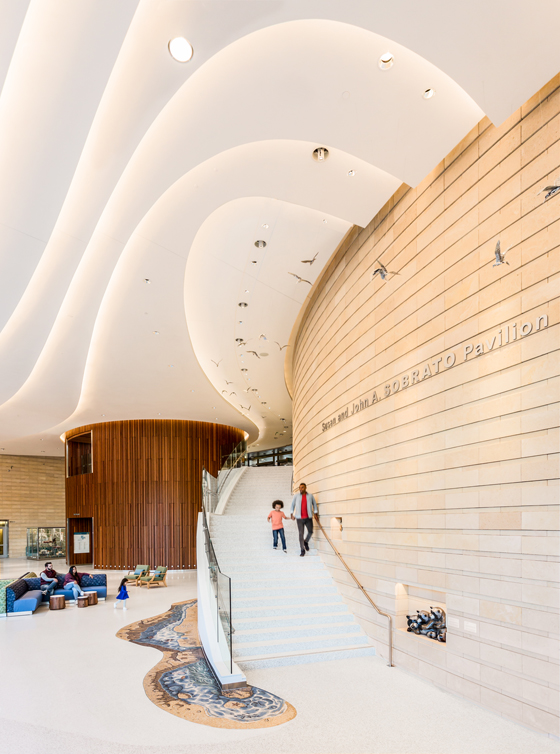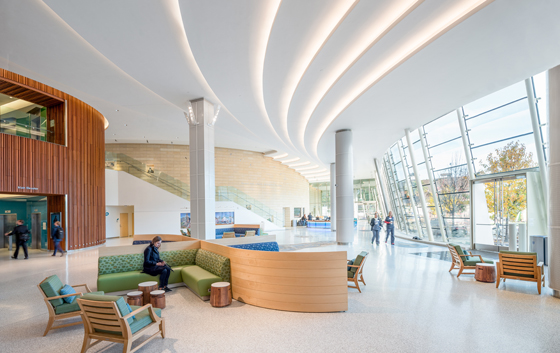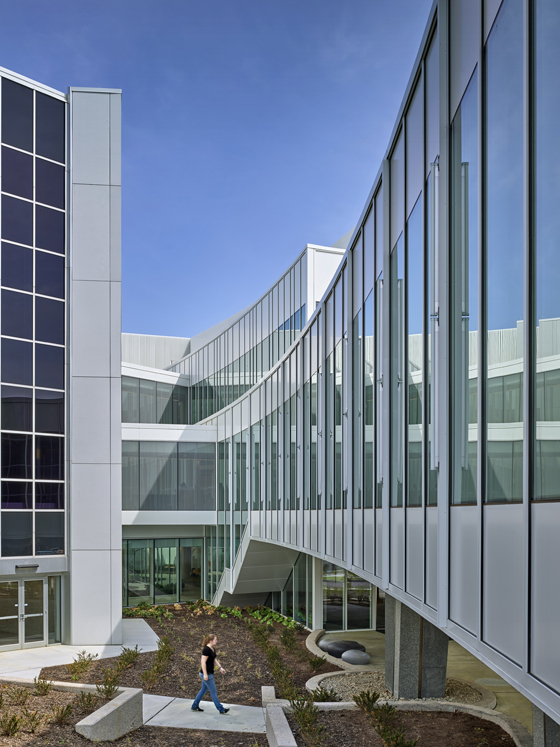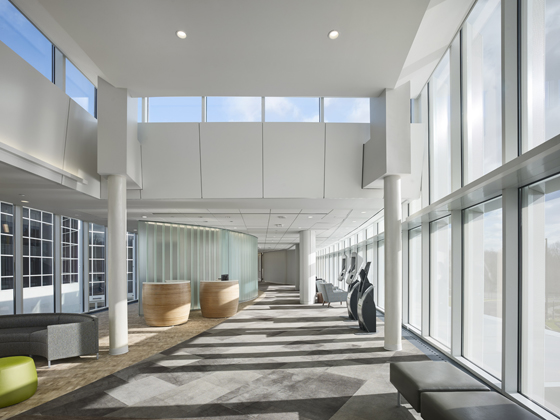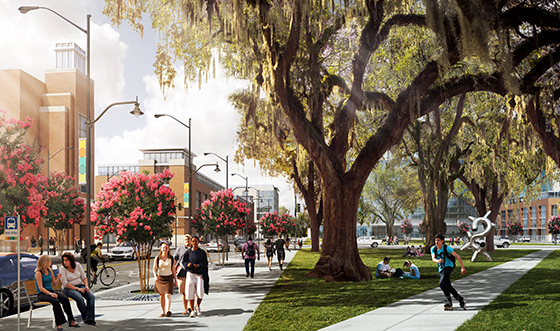Build me up: Perkins+Will talk health
Texto por Jaime Heather Schwartz
Berlin, Alemania
18.10.18
The interdisciplinary architecture and design firm Perkins+Will is pioneering holistic health initiatives, building spaces that promote wellness for individuals and communities at large.
At Memorial Sloan Kettering Monmouth, the linear accelerator entries are celebrated with natural wood and large skylights. Photo: Halkin Mason
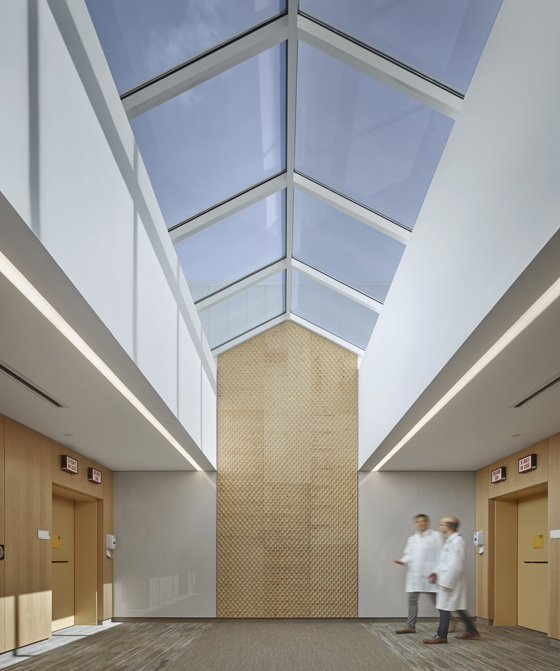
At Memorial Sloan Kettering Monmouth, the linear accelerator entries are celebrated with natural wood and large skylights. Photo: Halkin Mason
×Healthcare has become a major concern around the globe, and questions around how to minimise its costs also raise the issue of its prevention.
Perkins+Will is actively working towards solutions with research-based, patient-centred healthcare projects. They were recently the only firm to win two 2018 National Healthcare Design Awards from the American Institute of Architects for their Lucile Packard Children’s Hospital Stanford in California and their Memorial Sloan Kettering Monmouth, New Jersey. Central to their thinking about healthcare is recognising two important factors: that health is not an individual process and that public health is part of public space.
Architonic caught up with Senior Urban Designer Basak Alkan and Principal Robin Guenther to discuss their practice in more detail.
Throughout the Lucile Packard Children’s Hospital Stanford children are given the chance to interact with nature, whether through themed artwork or garden areas. Photographer: Emily Hagopian (top); Vittoria Zupicich (middle); Steve Babuljak (above)
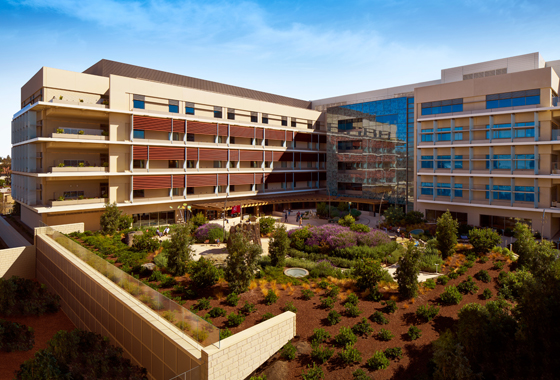
Throughout the Lucile Packard Children’s Hospital Stanford children are given the chance to interact with nature, whether through themed artwork or garden areas. Photographer: Emily Hagopian (top); Vittoria Zupicich (middle); Steve Babuljak (above)
×Both of your projects that were recently honoured by the American Institute of Architects’ Academy of Architecture for Health were recognised for their attention to the patient experience. Can you explain your approach to patient-centred design?
Robin Guenther: Our approach is firmly rooted in health and wellbeing. Both projects share a deep exploration of biophilic design principles as a key element of the experience. The evidence linking nature to healing is convincing. We believe that buildings can support human affinity with nature through a wide variety of design elements, from the introduction of actual nature, beginning with daylight and views – a key element of the design at Monmouth – to the development of outdoor gardens at Packard.
Memorial Sloan Kettering Monmouth was designed using evidence-based principles, calling for the integration of nature and natural light to foster a better patient experience. Photos: Halkin Mason
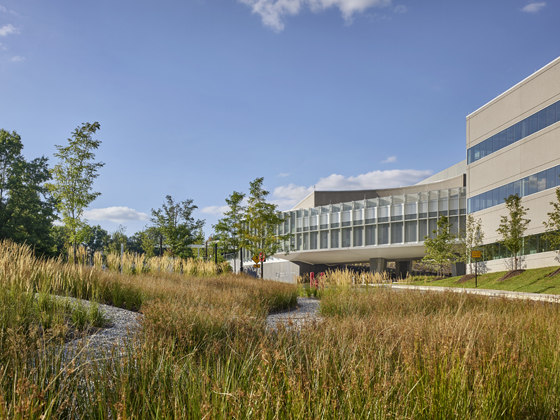
Memorial Sloan Kettering Monmouth was designed using evidence-based principles, calling for the integration of nature and natural light to foster a better patient experience. Photos: Halkin Mason
×Your ‘health district’ initiative moves beyond the patient by encouraging community buy-in. Why is this important?
Basak Alkan: Working with neighbours, city-planning staff and elected representatives gives health systems a better understanding of the health needs that they are trying to address, and opportunities for addressing entrenched issues further upstream than the regulatory approval process.
Our Baton Rouge Health District master plan similarly included numerous sessions, bringing together the institutions and their neighbours whose ideas and priorities were reflected in the plan recommendations. As a result, the district has been able to secure funding for new pedestrian infrastructure and trails that will connect district hospitals and improve the walkability of the area for all, including residents. This is great progress for a suburban district renowned for its congested streets that lacked even the basic sidewalk.
The Baton Rouge Health District Plan, initiated in 2013, proposes to work with partners to improve health outcomes and reduce the burden of chronic disease
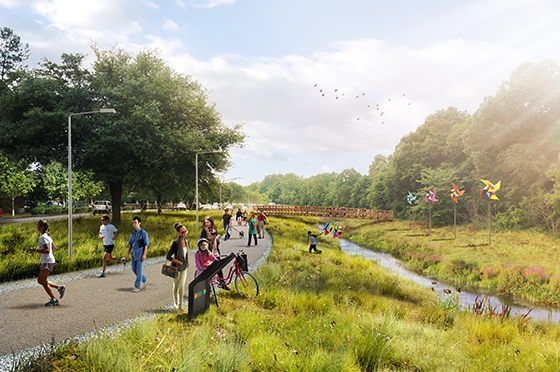
The Baton Rouge Health District Plan, initiated in 2013, proposes to work with partners to improve health outcomes and reduce the burden of chronic disease
×What role does technology play in your planning?
Robin Guenther: Our Material Performance Lab is essential in furthering our work on healthy materials. Staying abreast of new research and material science is essential; our new Transparency website is a technology tool that works on smartphones and allows our clients and consultants to understand easily the health impacts of their material choices, and to communicate those within their own organisations.
What’s your personal programme when it comes to staying healthy?
Robin Guenther: Mindfulness – yoga and meditation – is an essential part of my commitment to managing stress in New York! I enjoy hiking in the Catskills and getting my own “nature fix” as part of life in the largest city in the US.
Basak Alkan: As a working mum of twin one-year-olds, I have little time for sleep or self-care! That’s why my daily bike commute to work is very important to me. We also make a point of taking the girls to the farmers’ market every weekend to buy local, in-season produce for the week’s home-made vegetarian meals.
© Architonic

